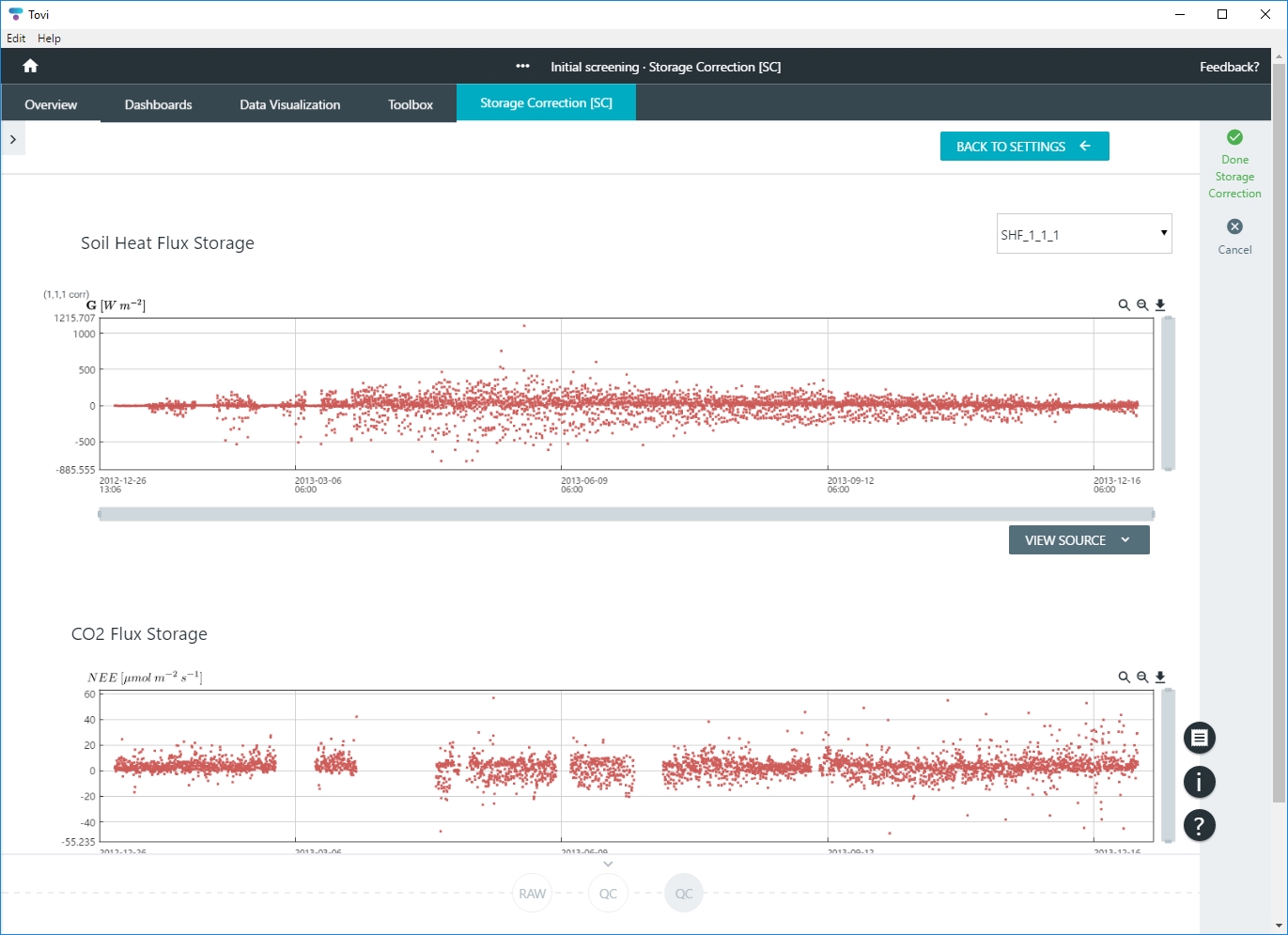Determining storage corrections
Storage corrections typically will be applied after the first quality screening, biomet gap filling, and averaging steps have been completed.
The following description is excerpted from Burba, 2013, Eddy Covariance Method for Scientific, Industrial, Agricultural, and Regulatory Applications.
Eddy covariance instruments record flux at a specific measurement height. Below this height, gas can build up or become depleted, especially during calm periods, or within a tall canopy (CO2 buildup on a calm night or CO2 depletion during a calm day, for examples). Depending on the canopy and terrain, wind gusts can move the buildup sideways below the tower or upward next to the tower very rapidly. In these circumstances, flux is either undetected or only partially detected, especially in tall canopies or in complex terrains.
On flat, uniform terrain with a short canopy and good turbulent mixing, these processes are either small, or eventually balance themselves out over the long term, but they still may have a significant effect on hourly data. Gas concentration profile measurements allow detection of the majority of these buildups by providing data for computing a gas flux storage term below the measurement height.
The storage term is actually calculated from the temporal changes in the integrated gas concentration profile, and is added to the eddy covariance flux to arrive at the final flux value. The gas concentration profile is typically measured at a slow rate at several heights (z) above the soil surface, and below the height of the eddy covariance instrumentation (zm). The flux storage is computed from this profile over some time interval (t), usually a half-hour or hour.
Storage calculations are especially important during low wind conditions, during stable stratification, in high canopies, or in any cases when air mixing is significantly reduced and/or the atmosphere and surface are decoupled. Storage calculations are not measurements of turbulent fluxes, but they are important for the final flux values, especially when net ecosystem exchange is the focus of the study.
Note: It is important to distinguish between "gas flux storage" and "energy storage." Gas flux storage is the amount of gas building up under the tower, whereas energy storage (or heat storage) is part of the ecosystem energy budget and describes the heat energy stored in the soil, liquid water, or mulch layer. The soil portion of the heat storage is a part of soil heat flux, and is often called "soil heat storage," or sometimes "soil heat flux storage."
Storage corrections require data that may not be included in the original dataset, including information about the soil and position of soil heat flux sensors. You can proceed with storage corrections after providing the required information.
- In Overview > Analysis History, select the node to modify and click Toolbox > Storage Corrections.
- Tovi will evaluate the data set. If you get a message that states Required Metadata Missing, click Continue to advance to the Metadata page, where you can enter the missing information. You may need to describe the soil under Site Characteristics and indicate the X, Y, and Z coordinates of the soil sensors (SHF, SWC, and Ts) under Local Variables. After entering this information, return to the Storage Corrections page.
- Select which term to apply.
- You can select terms for the soil heat flux storage and CO2 flux storage.
- Select Use and then click Start.
- Tovi will compute the results.

- You can View Source for each computation.
- For Soil Heat Flux Storage, the source will include G, Tsoil. and SWC. You can review the data and zoom in for more details.
- For CO2 Flux Storage, the source will include FCO2 and SCO2.
- If you're satisfied, click Done Storage Correction and name the step.
- Tovi will save the step and add a node to the processing sequence. The new node includes new computed variables, which you can view. You'll use the soil heat flux storage term to compute the energy balance and the CO2 storage correction in the u* threshold detection.

